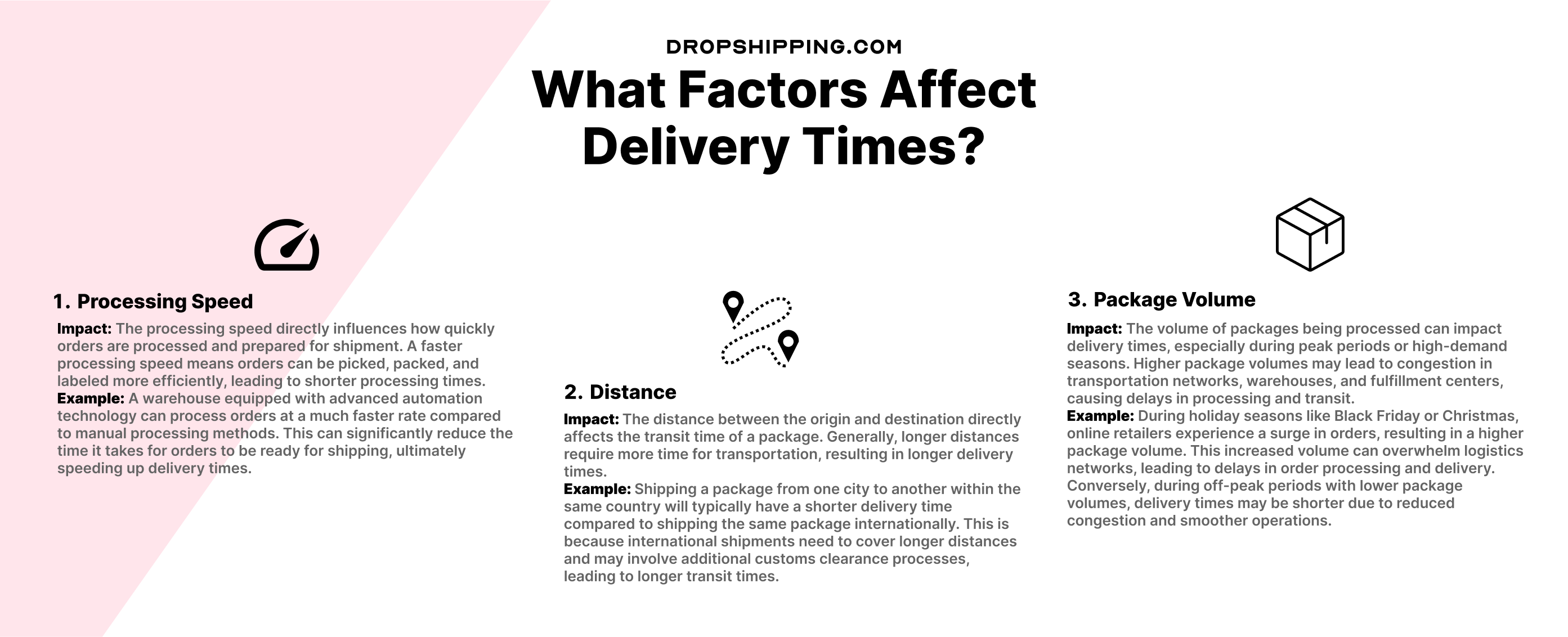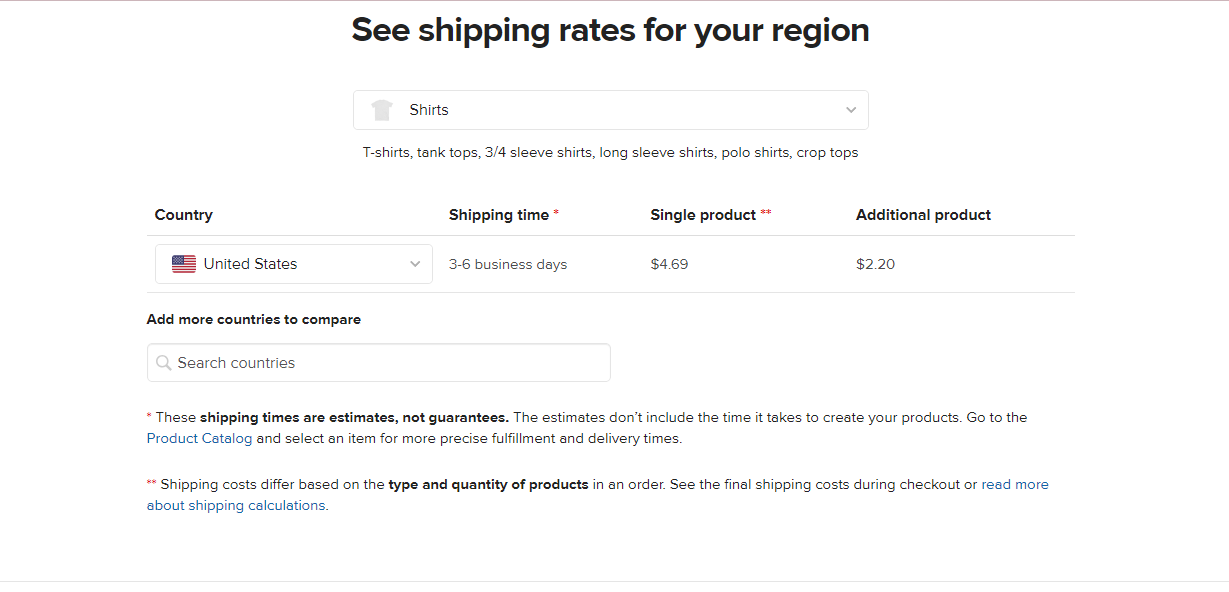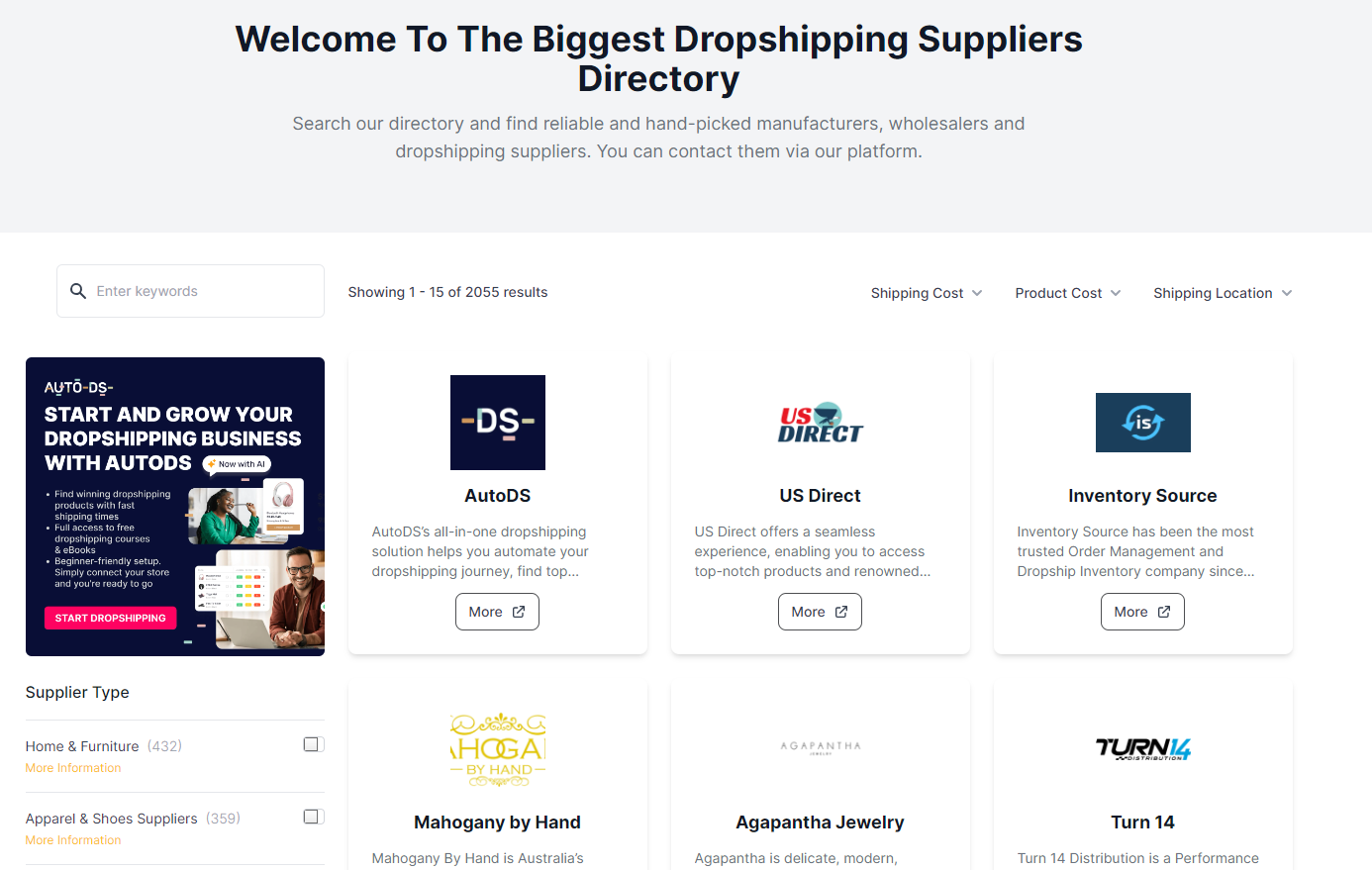How Long Does Standard Shipping Take For Ecommerce Stores?
When it comes to running an ecommerce store or a dropshipping business, the term “standard shipping” is more than just a delivery option — it’s a promise of reliability and affordability.
It’s the backbone of order fulfillment for countless online retailers, especially small businesses striving to meet customer expectations while maintaining lower operational costs.
In this article, I’ll dive into the nitty-gritty of standard shipping times across different carriers.
Whether you’re new to the game or you’re looking to streamline your existing processes, I’ve got you covered with actionable insights that can help avoid any wasted time and enhance your customers’ shopping experience.


Table of Contents
- What Is Standard Shipping and Its Delivery Times
- The Importance of Offering Reliable Delivery Options for Your Ecommerce Store
- Express Shipping vs Standard Shipping
- The No. 1 Tool for all dropshippers – now with AI
- 2. How To Leverage Ground Service for Reliable Economical Shipments?
- How To Manage Standard Shipping for Improved Customer Experience?
- Conclusion
What Is Standard Shipping and Its Delivery Times
Standard shipping is the default mailing option provided by carriers, balancing efficiency with cost savings. It’s a term familiar to anyone who shops online or sends packages.
Unlike express shipping, which promises faster delivery for an added fee, standard shipping offers a more economical rate by allowing for longer transit times.
Delivery times

Delivery times can swing widely based on several factors:
- Processing Speed: The efficiency of an ecommerce store’s fulfillment process greatly affects how quickly an order begins its journey. For instance, a business that promises same-day processing can hand off packages to carriers sooner than one that requires two business days to handle orders.
- Distance: Geographical location is a pivotal factor. Sending a package across the country will naturally take longer than sending it to a neighboring state. For example, a delivery from New York to California will typically have a longer transit time than one sent from New York to New Jersey.
- Package Volume: The number of packages being handled can affect delivery speed, especially during peak seasons like holidays. Carriers may experience delays when there’s a surge in volume, as seen during Black Friday or Cyber Monday sales events.
To illustrate the impact these factors can have, consider Jane’s Boutique—an online clothing retailer. During off-peak months, Jane’s Boutique might fulfill orders within one day, and customers receive their packages within 3-5 business days.
However, during the holiday season, processing might take 2-3 days due to increased order volume, with delivery stretching up to 7-10 business days.

Therefore, ecommerce stores should set realistic expectations about standard shipping with their customers and communicate how peak times may extend the typical delivery windows.
By understanding these determinants and setting clear expectations, businesses help ensure their customers remain satisfied—even when things get busy.
As ecommerce continues to grow exponentially, it’s crucial not only to choose the right shipping options but also to manage them effectively for customer satisfaction.
The Importance of Offering Reliable Delivery Options for Your Ecommerce Store
The choices you make about delivery options are more than just logistical decisions; they’re a direct line to your customer’s satisfaction and loyalty.
Think of it as a promise — one that says, “We understand what you need, and we’re here to deliver.” That promise can mean the difference between a one-time sale and an ongoing relationship marked by repeat purchases and glowing reviews.
Why Do Delivery Options Matter?
✅ Customer Expectations
In today’s fast-paced world, customers expect a variety of shipping options that align with their needs. Some may prioritize cost savings and opt for standard shipping, while others might need an item urgently and look for express shipping.
✅ Brand Reputation
Consistent and reliable delivery experiences contribute to building a trustworthy brand image.
Thus, positive shipping experiences often lead to positive product reviews, which can boost your online presence and attract new customers.
When it comes to meeting these expectations, the concept of service level agreements (SLAs) enters the scene.
SLAs are the backbone of delivering on your promises. They set clear expectations for delivery times, whether for standard or expedited shipping, so everyone is on the same page.
The Role of Service Level Agreements

- Standard Shipping SLAs: Often promise delivery within a certain number of business days after an order has been processed.
- Expedited Shipping SLAs: Offer faster delivery times at an additional cost, which can include options like overnight or 2-day delivery.
For example, Printful POD dropshipping supplier offers several shipping methods. So, their regular shipping usually takes about 2-7 business days.
However, the express Shipping typically delivers within 1-2 days.👇

By defining these terms with your logistics partners, you ensure that both you and your carrier understand the benchmarks for success. This understanding helps maintain a consistent quality of service, which in turn helps manage customer expectations effectively.
Choosing the right mix of delivery options — balancing speed with cost — becomes crucial.
Ground service often emerges as the hero here; it’s typically less expensive than air freight while still offering reasonable transit times. It’s all about finding that sweet spot where value meets convenience.
With this in mind, knowing how to manage these delivery choices effectively becomes pivotal in ensuring a seamless shopping experience — an experience that keeps customers coming back for more.
Let’s dive into how balancing speed with cost can shape customer choices and satisfaction in the next section.
Express Shipping vs Standard Shipping

Navigating the shipping landscape requires a fine-tuned balance between speed and cost, which is where express shipping and standard shipping come into play.
👉 Check out my ShipBob Review: The Best 3PL Fulfilment Company.
These two options serve very different needs, and understanding their advantages and limitations is key to making informed decisions for your ecommerce store.
Express Shipping
- Speed: Typically offers overnight or 2-day delivery options.
- Cost: More expensive due to the priority service.
- Benefits: Ideal for time-sensitive orders or last-minute purchases.
Standard Shipping
- Speed: Slower than express, with delivery times ranging from a few days to over a week.
- Cost-effectiveness: More affordable, making it a smart choice for less urgent shipments.
- Benefits: Cost savings can be passed on to customers or offset other operational expenses.
For example, we are all familiar with AliExpress’s long shipping times and frustrated as well. However, the platform gives you choices.
So, for instance, if you prefer offering cheaper services to your end customers, AliExpress will ship your products even for free.
However, the platform also offers express shipping, which of course will deliver better customer service, but it will be pricey.👇

💡 Tip: Learn about AliExpress Premium Shipping: The Key to Get Your Orders on Time.
Therefore, you must know your customers and choose the best option for you.
When to Choose Express Shipping?
- Perishable Goods: Items like fresh food or flowers need to arrive quickly to remain in prime condition.
- High-value Products: Luxury items often warrant the premium experience of fast delivery.
- Customer Expectations: Some customers are willing to pay more for speed, especially during holidays or special events.
When Standard Shipping Is the Right Call?
- Non-urgent Items: Books, clothing, or home goods typically don’t require expedited shipping.
- Cost-Conscious Customers: Shoppers looking for deals may prefer to save on shipping and wait longer for their items.
By aligning the nature of your products and the preferences of your target market, you can offer shipping options that enhance customer satisfaction while maintaining cost-effectiveness.
Selecting the appropriate shipping speed for each scenario plays a pivotal role in managing expectations and ensuring positive experiences without compromising on affordability.
Tailoring your approach based on these factors not only meets diverse customer needs but also optimizes your logistics strategy.
Keep in mind that while express shipping might bring a wow factor with its rapid delivery, standard shipping remains a stalwart choice for its blend of economy and reliability – essential ingredients for building long-term customer loyalty.
2. How To Leverage Ground Service for Reliable Economical Shipments?
When it comes to balancing reliability and cost-saving in your ecommerce shipping strategy, ground shipping is an excellent choice.
This type of shipping, offered by major logistics companies like UPS or FedEx, offers reasonable transit times and lower shipping costs.
The Benefits of Ground Shipping
Let’s take a closer look at why ground shipping is appealing:
✅ Reasonable Transit Times
While not as fast as express shipping, ground service still provides decent delivery times.
On average, packages can arrive within 2-5 business days. This makes it suitable for non-urgent orders or items with a longer shelf-life.
✅ Cost-Efficiency
Ground shipping is generally more affordable compared to express or air services.
This makes it a popular option for small businesses or startups looking to manage their budgets while ensuring customer satisfaction.
Tips for Optimizing Ground Shipping
While ground service offers advantages, it’s essential to use it effectively for maximum benefits. Here are some tips to optimize this type of standard shipping:
🔸 Use Regional Distribution Centers
Distributing your inventory across multiple regional distribution centers reduces the distance packages need to travel.
This strategy speeds up last-mile delivery and improves the overall customer experience.
🔸 Track and Monitor Your Shipments
Take advantage of the tracking tools provided by ground service providers.
Keep a close eye on your shipments and provide timely updates to customers about their order status.
🔸 Choose Your Packaging Wisely
Select lightweight and compact packaging options whenever possible to minimize costs. Remember, carriers consider both weight and dimensions when calculating shipping rates.
By understanding how ground service works and implementing these optimization strategies, you can establish a strong standard shipping system that delivers reliable yet economical shipments to your customers.
How To Manage Standard Shipping for Improved Customer Experience?
When it comes to standard shipping, a well-orchestrated dance occurs behind the scenes.
This complex routine involves managing vendors, supply chain management, and having a dedicated logistics specialist on deck.
Each component plays a crucial role in ensuring that your ecommerce store delivers a seamless customer experience.
1. Strong Partnerships with Reliable Suppliers
Establishing solid relationships with dependable suppliers is paramount. Why?
Because these partnerships can significantly reduce fulfillment delays and errors in the standard shipping process.
Imagine your online store selling a hot product. The demand is high, but your supplier fails to deliver the goods on time. What happens next?
You’re left with disappointed customers and potential negative reviews – definitely not the good stuff you want for your brand.
So, how do you avoid this scenario? By carefully vetting your suppliers for reliability and responsiveness.
So, look at their track record, ask for references, and consider their capacity to handle volume spikes during peak seasons like holidays.
However, if you are struggling to find reliable dropshipping suppliers, the Dropshipping.com supplier directory is huge, and it provides valuable insights about each supplier, like shipping times, order processing times, costs, MOQ, and more.👇

2. Negotiating Favorable Shipping Rates
Another key aspect of managing standard shipping effectively revolves around cost-efficiency.
Ecommerce stores can negotiate better shipping rates with carriers by leveraging volume discounts or long-term contracts.
These strategies can help balance the shipping cost while maintaining reasonable delivery times.
👉 Learn How To Determine Shipping Costs When Selling Online.
For instance, if you’re consistently shipping large volumes of products, you may qualify for significant discounts from carriers like UPS or FedEx.
Negotiating long-term contracts can also lock in lower rates and protect your business from unexpected rate hikes in the future.
3. Role of a Logistics Specialist
On the topic of monitoring and optimizing standard shipping operations, having a dedicated logistics specialist within your team can be a game-changer.
👉 Read about Dropshipping Agent: How To Find The Best Dropshipping Agents?
This person’s role entails:
- Overseeing day-to-day shipping operations
- Ensuring compliance with carrier requirements
- Analyzing shipping data for insights on cost-saving opportunities
Having someone who lives and breathes logistics will help your ecommerce store avoid wasted time and resources. Also, they can spot inefficiencies, suggest improvements, and make sure your standard shipping process runs like a well-oiled machine.
At the end of the day, managing standard shipping for improved customer experience comes down to these three critical elements.
By mastering each one, you’re setting your ecommerce store up for success in delivering a smooth shipping experience to your valued customers.


Conclusion
Standard shipping strikes a crucial balance between cost-efficiency and customer satisfaction for ecommerce stores and small businesses. It’s about hitting that sweet spot where you deliver value to your customers without breaking the bank.
And let’s be honest, who doesn’t love good stuff that doesn’t equate to wasted time or money?
So, to those of you running these businesses, consider this your action plan for shipping success:
✅ Implement Effective Strategies
Your business thrives on repeat customers and glowing reviews. By implementing the strategies discussed, such as leveraging ground services or optimizing shipping operations, you ensure standard shipping becomes a competitive advantage.
✅ Best Practices Are Your Best Friends
Embrace best practices like nurturing strong supplier relationships and securing better rates with carriers. These are not just tips; they’re the backbone of a system that ensures timely and reliable deliveries.
✅Customer Loyalty Is the Endgame
Remember, every package delivered on time is a step towards fostering long-term customer loyalty. Loyalty is the currency in today’s competitive ecommerce landscape.
By paying attention to these aspects, you’re setting yourself up for success. So go ahead, make standard shipping your secret weapon, and watch as your ecommerce store or small business thrives in a world where speed is king but reliability wears the crown.













![The Top 21 3PL Companies Compared [2024 List & Guide]](https://images.weserv.nl/?url=https://prod-dropshipping-s3.s3.fr-par.scw.cloud/2024/03/Frame-3922469.jpg&w=420&q=90&output=webp)